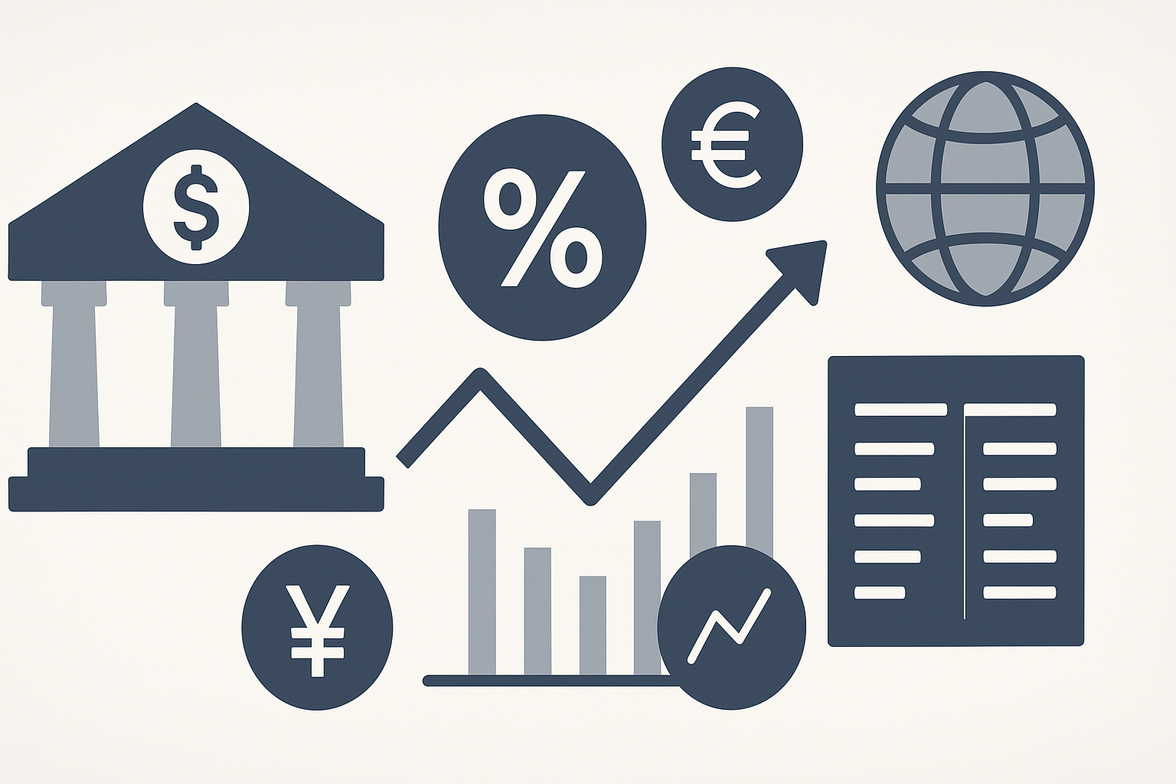
Introduction
The global financial landscape is dynamic and ever-changing. It presents both immense opportunities and significant inherent risks. Navigating this complexity requires specialized expertise. Many financial institutions face constant threats from market volatility and credit defaults. Understanding and mitigating these risks is paramount for stability and growth. This is where a Financial Risk Manager (FRM) plays a critical role. This article explores the path to becoming an FRM. It details the certification process. It also covers career opportunities and potential earnings. The FRM designation is globally recognized. It equips professionals with essential risk management skills. It is vital for safeguarding financial assets.
Understanding the Financial Risk Manager (FRM) Role
A Financial Risk Manager is a highly specialized professional. They identify, measure, and manage financial risks. These risks can threaten an organization’s assets or earnings. The role involves deep analytical skills. It also requires a strong understanding of financial markets. FRMs work to protect firms from financial losses. They also help ensure regulatory compliance. This prevents potential financial crises within institutions. Their expertise is crucial in volatile economic conditions. They provide strategic insights to senior management.
Key responsibilities of an FRM are diverse. They assess market risks. This includes interest rate and currency fluctuations. They also evaluate credit risks. This involves potential default by borrowers. Operational risks are another area. This covers internal failures or external events. Liquidity risk, the ability to meet short-term obligations, is also managed. Furthermore, they address reputational risks. FRMs develop strategies. These strategies mitigate potential financial exposures. They use advanced models and analytical tools. This helps them quantify and manage risk effectively.
Why Pursue the FRM Certification?
The FRM certification is a globally respected credential. It signifies expertise in risk management. Earning this designation offers many advantages. It greatly enhances career opportunities. It also boosts earning potential. The certification demonstrates a deep understanding of risk concepts. It covers methodologies and their practical application. It is valued by employers worldwide.
The FRM designation provides global recognition. It opens doors to elite financial institutions. It shows a commitment to professional excellence. Professionals gain specialized knowledge. This knowledge is essential in the complex financial world. It differentiates candidates in a competitive job market. The FRM is a mark of distinction. It signals advanced competence in risk management. This can lead to rapid career advancement.
The FRM Certification Exam: Structure and Requirements
The Global Association of Risk Professionals (GARP) administers the FRM exam. It is a challenging two-part examination. Each part tests specific areas of risk management. Candidates must pass both parts. There are no specific educational prerequisites to register. However, a strong quantitative background is highly recommended. The exam requires significant preparation. Success depends on dedicated study.
FRM Exam Part I
Part I focuses on foundational concepts. It covers tools used in risk management. This includes four key subjects.
- Foundations of Risk Management: Introduces risk types and their management. It covers corporate governance and ethical guidelines.
- Quantitative Analysis: Focuses on statistical methods. It includes probability, hypothesis testing, and regression analysis.
- Financial Markets and Products: Explores debt, equity, derivatives, and foreign exchange markets. It details various financial instruments.
- Valuation and Risk Models: Covers valuing financial instruments. It includes bond valuation and option pricing models.
This part ensures candidates have a solid theoretical base. It establishes the necessary analytical framework.
FRM Exam Part II
Part II applies the concepts learned in Part I. It delves into advanced risk management techniques. It also consists of six major subjects.
- Market Risk Measurement and Management: Focuses on measuring and managing risks from market price movements. This includes Value-at-Risk (VaR).
- Credit Risk Measurement and Management: Addresses risks from borrower default. It covers credit derivatives and collateral.
- Operational Risk and Resiliency: Deals with risks from internal processes, people, and systems. It also includes external events.
- Liquidity and Treasury Risk Measurement and Management: Examines funding and market liquidity risks. It covers treasury management functions.
- Risk Management and Investment Management: Integrates risk management into portfolio construction. It includes performance measurement.
- Current Issues in Financial Markets: Covers recent developments and challenges. This includes regulatory changes and emerging risks.
Part II requires a deeper understanding. It tests the practical application of risk management.
A Step-by-Step Guide to Becoming an FRM
Becoming a certified FRM is a structured process. It requires commitment and strategic planning. Following these steps will guide aspiring professionals. This path leads to a rewarding career in financial risk management. Each stage is crucial for success.
Step 1: Meet the Prerequisites
While GARP does not mandate a specific degree, a strong educational background is beneficial. Most successful candidates hold degrees in finance, economics, mathematics, or related quantitative fields. A solid grasp of statistics and calculus is essential for tackling the exam material. Candidates should assess their foundational knowledge before registering. Consider preparatory courses if your background needs strengthening. This initial assessment is vital.
Step 2: Register for the Exam
Registration for the FRM exam is done through the GARP website. It is important to pay attention to registration deadlines. Early registration often comes with reduced fees. GARP offers specific exam windows throughout the year. Candidates can choose their preferred testing period. Plan your registration carefully. This aligns with your study schedule.
Step 3: Prepare for the FRM Exam
Exam preparation is the most time-consuming step. Candidates should allocate a minimum of 200-300 hours per part. This ensures comprehensive coverage of the syllabus. GARP provides official study materials. Many third-party providers also offer prep courses. These resources can be invaluable.
- GARP Study Guides: These are the official texts. They are crucial for understanding the core concepts.
- Prep Courses: Commercial prep providers offer structured learning. They often include lectures, practice questions, and mock exams.
- Online Forums and Communities: Engage with other candidates. These platforms offer support and clarification on difficult topics.
- Flashcards for Key Concepts: Create or use pre-made flashcards. They aid in memorizing formulas and definitions.
- Practice Questions and Mock Exams: Regularly test your knowledge. This helps identify weak areas. It also familiarizes you with the exam format.
A consistent study plan is key. Break down the material into manageable sections.
Step 4: Pass Both Parts of the Exam
Passing both FRM exam parts is challenging. It requires thorough preparation and strategic exam-taking skills. On exam day, manage your time wisely. Each question is equally important. Read questions carefully to avoid errors. Focus on understanding concepts rather than rote memorization. Practice under timed conditions. This builds endurance for the lengthy exams. Stay calm and confident.
Step 5: Fulfill the Work Experience Requirement
After passing both exam parts, candidates must gain relevant work experience. GARP requires two years of full-time professional experience. This experience must be in a risk management-related field. It must be completed within five years of passing Part II. Submit an experience attestation to GARP.
- Credit Risk Analysis: Roles involving assessing borrower creditworthiness.
- Market Risk Modeling: Developing and implementing models for market risk.
- Operational Risk Assessment: Identifying and mitigating internal process risks.
- Regulatory Compliance: Ensuring adherence to financial regulations.
- Portfolio Management with a Risk Focus: Managing investment portfolios with an emphasis on risk control.
- Financial Engineering: Designing complex financial products and risk models.
This practical experience solidifies theoretical knowledge. It is the final step to earning the FRM designation.
Career Paths for FRM Professionals
The FRM designation opens a wide array of career opportunities. Professionals with this certification are in high demand. They work across various sectors of the financial industry. Their skills are critical for managing complex financial landscapes. The roles available are both challenging and rewarding.
Common job titles for FRM holders include:
- Risk Analyst: Entry-level position, focuses on data analysis and reporting.
- Credit Risk Manager: Specializes in evaluating and managing credit exposure.
- Market Risk Manager: Oversees risks from market fluctuations, such as interest rates and exchange rates.
- Operational Risk Consultant: Advises on mitigating risks related to internal processes and systems.
- Chief Risk Officer (CRO): A senior executive role, responsible for an organization’s overall risk strategy. This is a long-term career goal.
- Portfolio Manager (with risk overlay): Integrates risk management into investment decisions.
- Regulatory Risk Specialist: Ensures compliance with financial regulations and develops risk policies.
These roles require continuous learning. The financial environment constantly evolves.
Industries Employing FRM Holders
FRM professionals are sought after in many industries. Their expertise is crucial wherever financial risk is present.
- Investment Banking: Managing risks associated with trading, underwriting, and mergers.
- Commercial Banking: Assessing credit risk for loans and managing balance sheet risks.
- Asset Management Firms: Integrating risk management into portfolio construction and investment strategies.
- Insurance Companies: Quantifying and managing underwriting and investment risks.
- Hedge Funds: Developing sophisticated risk models for complex trading strategies.
- Regulatory Bodies: Contributing to financial stability through policy development and oversight.
- Consulting Firms: Advising diverse clients on risk management strategies and implementation.
The demand for FRMs continues to grow. This is due to increasing regulatory scrutiny. Also, the complexity of financial instruments plays a role.
Salary Expectations for Financial Risk Managers
Salaries for Financial Risk Managers are highly competitive. They reflect the specialized nature of the role. Several factors influence earning potential. These include experience level, geographic location, and industry sector. The size and type of the employing institution also play a significant part. The FRM certification itself often leads to higher compensation. It signifies a valuable skill set.
Entry-level FRM professionals, such as Risk Analysts, typically start with strong salaries. As experience grows, so does compensation. Mid-career professionals with the FRM designation can command significantly higher salaries. Those in senior management positions, like Chief Risk Officers, earn top-tier incomes. The FRM credential consistently places its holders at an advantage. It positions them for accelerated career and salary growth. Professionals in major financial hubs, such as New York or London, often see higher pay. This is compared to other regions.
The value of the FRM designation on earning potential is clear. It distinguishes candidates. It also validates their expertise. This leads to better job opportunities. It also results in more attractive salary packages. Companies recognize the critical importance of robust risk management. They are willing to invest in qualified professionals. Therefore, the FRM is an excellent investment for a finance career.
The Future of Risk Management and the FRM Role
The field of financial risk management is constantly evolving. New challenges and technologies are reshaping the landscape. FRM professionals must adapt and stay current. This ensures their continued relevance and effectiveness. The future holds increasing complexity and innovation.
Emerging risks are a significant concern. Cyber risk, for instance, poses a growing threat to financial data and systems. Climate risk is also gaining prominence. It impacts investments and insurance liabilities. Geopolitical risk can trigger market volatility. FRMs must develop new frameworks to address these complex issues. Understanding these new threats is crucial.
Technological advancements are transforming risk management practices. Artificial intelligence (AI) and machine learning (ML) are enhancing risk modeling. They enable more accurate predictions and deeper insights. Blockchain technology offers new ways to manage data and transactions securely. FRMs need to embrace these tools. They must leverage them for more effective risk assessment.
Increased regulatory scrutiny is another key trend. Governments and regulatory bodies are implementing stricter rules. This aims to prevent future financial crises. FRMs play a vital role in ensuring compliance. They help navigate complex regulatory environments. Continuous learning and professional development are essential. This helps FRM professionals stay ahead. They must maintain their expertise in a dynamic financial world.
Conclusion
Becoming a Financial Risk Manager is a challenging yet highly rewarding career path. The FRM certification provides a robust foundation. It equips professionals with critical skills. These skills are essential for navigating the complexities of the global financial market. The journey involves rigorous study. It requires passing challenging exams. It culminates in gaining valuable work experience.
The demand for skilled risk management professionals continues to grow. This is driven by an increasingly volatile and regulated financial environment. An FRM designation opens doors to diverse and impactful roles. These roles are across various sectors. From investment banking to insurance, FRMs safeguard financial stability. They contribute significantly to organizational resilience.
For those aspiring to a career in finance, especially in risk management, the FRM is an invaluable credential. It enhances career prospects. It also boosts earning potential. It signifies a deep commitment to excellence. The path demands dedication. However, the rewards are substantial. They include intellectual stimulation and significant professional impact. Embrace continuous learning. Stay updated on emerging risks and technologies. This ensures long-term success as a Financial Risk Manager. Your expertise will be a cornerstone of financial security.



